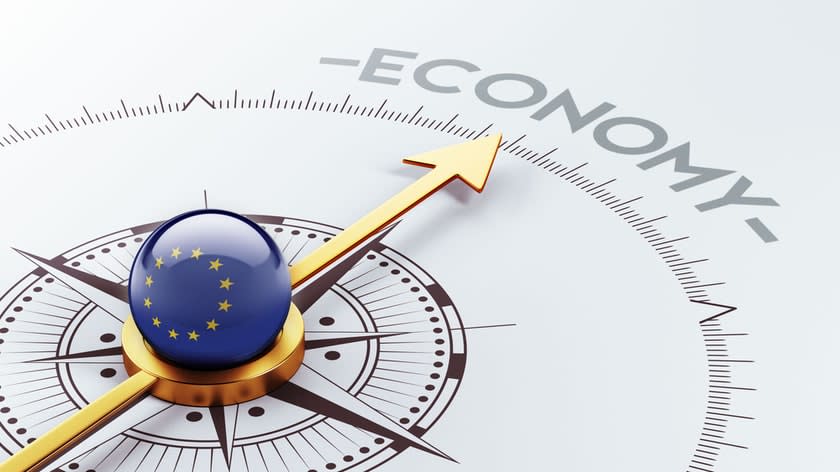Eurozone Outlook 2023 - Recession to limit underlying inflationary pressures

The eurozone economy grew solidly during 2022 Q1-Q3, despite the start of the war in Ukraine in February, which fuelled inflation and eroded real household income and corporate profitability. Growth was supported by rebounding services consumption, and catch-up growth in industry that had been constrained by supply bottlenecks, which had led to significant order backlogs. The stage is now set for contractions in GDP in 2022 Q4 and 2023H1. Firstly, because the factors that have driven growth in 2022 Q1-Q3 have largely vanished and, secondly, because financial conditions have tightened due to aggressive interest rate hikes, with further increases on the cards. Inflation has soared to record-high levels in 2022, but should fall gradually in the course of 2023. Headline inflation is expected to decline more rapidly than core inflation, which will be more sticky as companies will probably continue to pass on some earlier rises in input costs to consumers. Wage growth is expected to pick up, but remain contained as the employment outlook worsens. Government finances should deteriorate in 2023, with the debt ratios of the Big-3 EZ countries rising.
Final domestic demand to contract the next few quarters
Following surprisingly robust GDP growth in 2022 Q1-Q3, we expect GDP to contract in 2022Q4 and 2023H1, and to grow only modestly in the second half of 2023. Private consumption and private fixed investment are both expected to contract on average in 2023. Importantly, we think the potential for declines in the savings rate to fuel further private consumption growth has now been exhausted. The volume of private consumption expanded by 0.9% qoq in 2022Q3. Although data for household income in Q3 has not yet been published, real disposable income probably contracted, with rises in food and energy prices higher than the rise in nominal income.
We think that the decline in the savings rate will come to an end around the turn of the year, as the outlook for the labour market deteriorates, and precautionary savings start rising. Indeed, the real value of net household wealth (including houses), which jumped higher during the pandemic, dropped sharply in 2022 according to research by the European Commission, suggesting that potential tailwinds to consumption from changes in wealth and previously accumulated wealth have largely vanished. The worsened outlook for consumption, the slowdown in global trade, higher funding costs and tighter bank lending standards – combined with pressure on margins from the jump in energy prices and higher wage growth – should all contribute to declining private fixed investment in 2022Q4-2023H1. However, the extra investment support from the European RRF funds, estimated to be equal to roughly 0.5% GDP in 2023, should limit the contraction in total investment.

Headline inflation to decline faster than core inflation in 2023
Inflation has soared to historically high levels during the course of 2022. The rise was mainly driven by energy and food price inflation jumping higher on the back of soaring global commodity prices. Still, during the year, the contribution from non-energy industrial goods and services price inflation also accelerated. This rise in core inflation was partly due to high energy prices being passed on into goods and services prices (the ECB estimates that about half of current core inflation is due to categories defined as higher-intensity users of energy inputs;). Moreover, high food inflation has also had an impact on core inflation, as it is an important component in hospitality and related services. On top of that, inflation was fuelled by the depreciation of the trade-weighted euro exchange rate in 2021 and in the first half of 2022, by the normalisation of the price of services that had been in lockdown during the pandemic, and by bottlenecks in global supply chains, which lifted industrial goods prices.
Looking ahead, recent drops in food and energy commodity prices already reduced inflation in November (to 10.0%, from 10.6% in October) and will result in further sharp declines in headline inflation in the coming months. Core inflation should also decline in 2023, but we expect it to fall more gradually than headline inflation. Although falling commodity prices should also reduce the inflation rates of food and energy-intensive goods and services, we expect this process to be slow, as past rises in food and energy prices still do not seem to have been passed on fully to consumers. Non-energy industrial goods price inflation should ease in the coming months, as these prices are mainly driven by global supply and demand for industrial goods, which have become more balanced. However, services price inflation is expected to remain more elevated. Services inflation is more domestically driven and more sensitive to wage growth, which is expected to rise in 2022H2-2023H1 and stay elevated in 2023H2. All in all, inflation should fall noticeably in the coming months. We expect inflation to return to levels close to the ECB target by the end of 2023, but the risks to this forecast seem to be tilted to the upside.
Deteriorating labour market to keep a lid on wage growth
We expect wage growth to pick up in 2023, as employees seek pay rises to compensate part of the loss in real wages they suffered in 2022. Labour market tightness in many countries after the pandemic will support wage growth in 2023. Still, we expect wage growth to remain contained by the recession that is about to hit the labour market, with unemployment to start rising from early 2023 onwards. With wage growth expected to remain well behaved, and inflation likely to fall back towards the ECB’s 2% target around the end of 2023, we expect the ECB to start lowering interest rates again by end 2023. Before that, we first expect the central bank to hike interest rates by 50bp in December 2022 and by another 50bp in 2023Q1, something we discuss in more detail in our global outlook chapter.
Government debt to rise in 2023
Government finances had not yet fully recovered despite the phasing out of pandemic support measures, as large support packages were introduced to shield households and companies from soaring energy costs. The EC estimates that government support measures that directly impact the budget balance will amount to 1.2% GDP in 2022 in the eurozone as a whole. According to current plans, about 0.4pp of this will come to an end in 2023. Despite this decline in energy support measures, government budget balances are expected to deteriorate in 2023, due to the downturn and higher interest payments. Largely thanks to exceptionally high nominal GDP growth, government debt ratios will probably fall in 2022. However, we expect debt ratios to rise again in the Big-3 eurozone countries in 2023.


